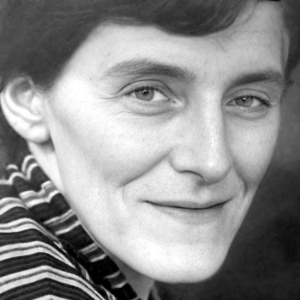
Katherine Anne MacLean (born January 22, 1925, in Glen Ridge, New Jersey; died September 1, 2017) was a quietly revolutionary voice in science fiction. Though she never sought widespread fame, her impact on the genre—and particularly its exploration of biological anxieties—remains significant. MacLean’s work—often characterized by meticulous scientific detail woven into compelling narratives—arrived at a crucial moment in the mid-20th century, reflecting both the burgeoning Space Race and growing concerns about unseen threats to human existence.
There was little in MacLean’s youth to suggest the speculative worlds she would one day create. It was in a sterile laboratory in 1947—surrounded by beakers and Bunsen burners, not blank pages—that her imagination first took flight with science fiction. That technical grounding, born of practical work, would become an unexpected gift, imbuing her stories with a rare authenticity and intellectual weight that set them apart.
She began publishing in the early 1950s, quickly establishing herself as a master of “hard” science fiction—stories grounded in plausible scientific principles. However, MacLean wasn’t interested merely in technological advancement; she was fascinated by humanity within those advancements. Her characters often grapple with profound ethical dilemmas and the psychological toll of exploration, isolation, and encountering the utterly alien.
MacLean’s style is notable for its measured pacing and precise prose. She favored a gradual unfolding of events, building tension through careful observation rather than bombastic action. This approach, in retrospect reminiscent of Frank Herbert’s Dune in its focus on ecological detail and societal implications, allowed her to explore complex themes with nuance and depth. Where many authors of the time leaned into space opera or simplistic alien encounters, MacLean offered a more introspective, almost clinical examination of what it meant to be human when confronted by the unknown. Authors like Poul Anderson often focused on heroic feats in space; MacLean’s heroes were scientists wrestling with uncertainty, doctors battling invisible enemies, and individuals struggling to maintain their identity in the face of overwhelming change.
Her story Contagion, published in 1950, stands as a particularly potent example of her concerns. The tale depicts a medical team landing on what appears to be an Earth-like planet only to discover it is already inhabited—by people who are remarkably similar to themselves, yet subtly different. The story’s importance lies not in its action (though suspenseful), but in its chilling exploration of the potential dangers of interplanetary contact and the fragility of human immunity. In a period marked by anxieties about Cold War biological warfare and the nascent field of space travel, Contagion served as a stark warning: the greatest threat might not be hostile aliens, but something far more insidious—a disease perfectly adapted to exploit our own biology. It foreshadowed many later works in the genre dealing with quarantine protocols, genetic compatibility, and the ethical considerations of colonization.
MacLean’s influence extended beyond her individual stories. She helped establish a new standard for scientific plausibility in science fiction, inspiring generations of authors to ground their narratives in rigorous research. Her work continues to resonate today, reminding us that the true frontier lies not just in reaching new worlds, but in understanding ourselves and the delicate balance of life itself.